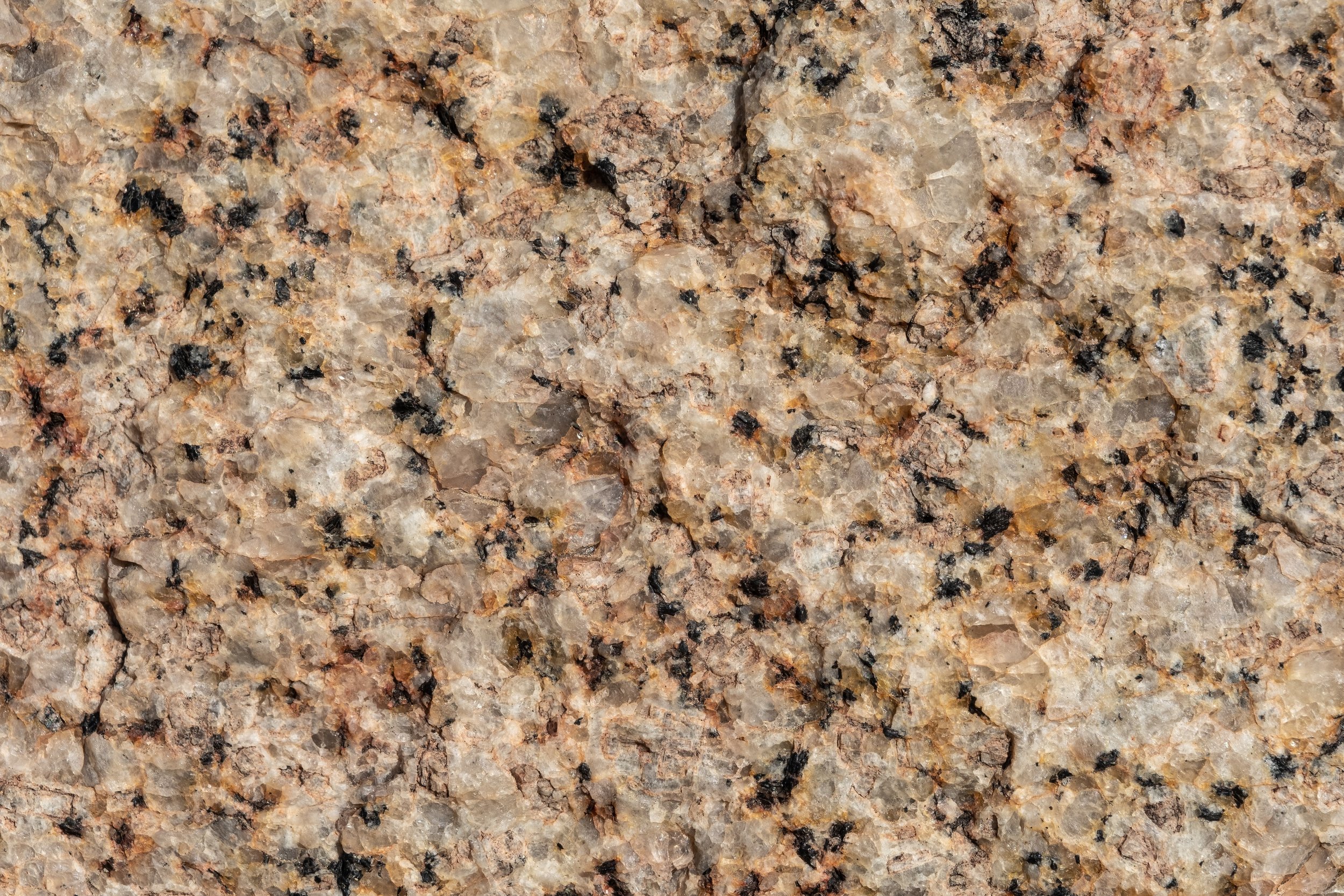Durango Marble Project Materials
Durango Marble has a range of products and project materials for a variety of applications. Click here to see more photos of our capabilities! Read through the materials below to learn about the different, natural stone we always have available. We have an excellent selection of slabs and remnants, and we are one of the largest suppliers.
-
Granite is a coarse grained igneous rock – molten matter from the earth’s interior that has cooled and solidified under pressure. It is composed chiefly of quartz and feldspar, and usually contains quantities of mica or hornblende. Crystallized at depth, granite masses are exposed by the movement of the earth’s crust or erosion of overlying rocks.
This material is great for a variety of building projects, both inside and out, and is by far our most popular stone. It is a very dense material that resists scratches and stains. We never recommend putting a burning hot pan on any countertop surface, but granite is superior in its heart resistance up to temperatures of 250 degrees Celsius. Because of improved and sophisticated fabrication equipment, it has become a more available choice for kitchen countertops, floors, and other highly used surfaces.
Granite varies widely in colors and patterns; no two stones are alike. That’s one of the reasons why granite is so popular. Your countertop with be one-of-a-kind!
-
Engineered stone is made of crushed quartz crystals, one of the hardest minerals found in nature. When combined with technologically advanced polymers, the result is a functionally superior and beautiful material for many different applications.
Engineered stone such as Caesarstone, Cambria, Silestone, Della Terra, and Pental are ultra-durable and resistant to scratches, chipping, or staining. Countertops maintain their shine without polishing or sealing. They are engineered to provide a hygienic, non-porous surface that is resistant to bacteria, moisture, mold, and mildew. It’s ideal for kitchens and food preparation areas, and because of its durability, great for commercial uses as well.
-
Marble is a metamorphic rock composed mostly of calcite or dolomite crystals. Its texture results from limestone that has metamorphosed due to extreme pressure and heat deep within the earth.
For centuries, marble has been a very popular building material, and it ranges in color from snow white to grey and black, shades of red, yellow, pink, green, or buff. Colors are caused by the presence of impurities and are frequently arranged in bands or patches that contribute to marble’s allure. Softer and more porous than granite, this stone can scratch or stain. However, sealing the surface with a good impervious product with reduce the risk.
Because of its beauty and elegance, marble is a great choice for bath vanities, floors, fireplace facings and hearths, walls, and windowsills.
-
Soapstone is a metamorphic rock (earth’s material that changes under extreme pressure and heat) who chief mineral is talc. It can also contain varying parts of chlorite, mica, termolite, quartz, magnetite, and iron compounds.
Soapstone is grey to green in color and has a smooth, soapy feel. It is very resistant to chemicals, acids, and heat. However, this is a soft stone that can be easily cut with a knife or other sharp tool. Surface scratches are minimized when the top is rubbed with a generous amount of mineral oil, which makes it appear dark and luxurious. Many soapstones contain very interesting patterns and markings that make it a unique choice for tables, countertops, fireplaces, and sinks.
-
Limestone is sedimentary rock mainly composed of calcium carbonate, and travertine is the terrestrial (land) formed version of limestone. Both stones are ordinarily white but may be colored by impurities. Iron oxide makes it brown, yellow, or red. Carbon makes it blue, black, or grey.
Most limestone is formed when the skeletons of marine invertebrates consolidate and compress. Deposits over several years can be very thick. Sometimes, the skeletons themselves do not compress, retaining their shape, which is visible when viewing the stone. Just think of it – you can actually see evidence for life a million years ago while brushing your teeth!
As a soft stone, limestone can be easily scratched, which is not a great choice for highly used surfaces. Yet when properly sealed and finished, the stone is very durable and water resistant, making it an excellent choice for bath vanities and furniture tops..
-
Onyx was a variety of cryptocrystalline quartz, often containing striking bands of contrasting colors that flow throughout the rock. In Roman times, onyx was often fabricated into vases and cups.
This material comes in a variety of colors: honey cream, reds, and greens. It has a fascinating translucent quality that is stunning when lit from behind. Although one of our more expensive stones, onyx makes wonderful accent pieces for bath vanities, furniture, and bar tops. It will also wow anyone who views it when the stone is mounted in a window frame!
FINISHES
-
A leathered, antiqued, or brushed finish brings out the stone’s natural texture. The texture is a rough, “river-washed appearance,” but still feels smooth and matted when you run your fingers over it. Due to the lack of shine, this finish hides fingerprints and smudges well. In some stones, the pattern is dramatic and irresistible, subtle and intriguing. It’s well worth the extra expense because of the amazing results.
This special finish is great for dark stone, like Cambrian Black, which tends to show fingerprints when either polished or honed. It also brings out any stone’s natural veining, which can resemble rivers running across the top.
-
The most popular choice of all finishes! Polishing creates a highly reflective surface, which displays vibrancy and increases the visibility of the color, depth, and crystal structure of the stone. With its increased resistance to humidity and chemical agents, it’s easier to keep clean and free of stains. This makes for a great finish with any project that requires a sleek and less porous surface.
Great for hard stone such as granite, marble, and some limestone containing amazing patterns and/or colors.
-
Honed stones have the most natural-looking finish. The satin smooth surface finish with little or no gloss is created by being sanded with a coarse abrasive to create a smooth, matte surface. This finish maintains the natural characteristics of the stone, yet makes the color shades slightly opaque. Colors and patterns are more subtle with a honed finish than with a polished finish. Honing is not recommended on very dark or black stones because it often results in an uneven finish.
Works well when you want a softer, more natural look. This is great for limestone and soapstone countertops and floors.



